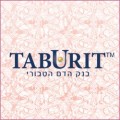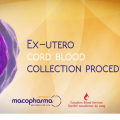You are here
News
2016
May 2016 Interview with Prof. Joanne Kurtzberg that originally appeared in the Israeli newspaper Yediot Aharonot Saturday Supplement 6 April 2016. Reported by Smadar Shir and translated by Tali Pelz.
Apr 2016 To date, most stem cell therapies for autoimmune diseases have been autologous stem cell transplants (AHSCT). Exciting results have been reported from clinical trials for Multiple Sclerosis (MS). In most trials, roughly half of patients who receive AHSCT for MS see the disease progression stop. Transplant response is better for patients who have a shorter history of illness, with some reporting dramatic improvements. Today, the majority of patients in cell trials for autoimmune diseases receive infusions of mesenchymal stem cells (MSC). Therapy with MSC enables MS patients to have improved disability scores without undergoing chemotherapy.
Apr 2016 We are collaborating on a project to compile all cell therapy clinical trials registered worldwide from 2011 through 2015. In this article we have prepared two figures to illustrate the importance of cell therapy clinical trials for autoimmune diseases and the variety of cell types currently in clinical trials for these diagnoses.
Apr 2016 Hepsi Zsoldos received the world's first cord blood transplant for the auto-immune disease Rheumatoid Arthritis. Her sister Carolyn tells Hepsi's story and appeals to expectant mothers to donate their cord blood, because "The ripples you make with even one donation can affect people in ways you could never imagine."
Mar 2016 Australians have launched their first clinical trial of cord blood therapy for cerebral palsy, which is the most common disability of childhood in Australia. Now therapy is available with cord blood stem cells from a sibling that is a perfect match.
Feb 2016 Carl Fox was a North Carolina Superior Court Judge in spring 2015 when he learned that he needed a stem cell transplant from a donor. But none of the 13.5 million people on the US national registry of adult donors was a match. Thus began the "Save The Fox" campaign of running donor drives. It is a classic story of a community coming together, and also of a devoted nurse who would not take no for an answer. Today Judge Fox is recovering from a double cord blood transplant, but Save The Fox continues to register more donors, especially African Americans who have the hardest time finding a match.
Feb 2016 Karen is a 6-year old boy who suffered from bone marrow failure and needed a stem cell transplant to survive. Great amounts of time and effort were spared to find a matching bone marrow donor for Karen, but all the efforts were in vain and not even a single match could be found. Since his birth, Karen’s own umbilical cord blood had been banked at Royan Stem Cell Technology Company. Karen became the 12th child in the world to receive an autologous transplant of his own cord blood stem cells for Aplastic Anemia, the first such case in Iran and all of the Middle East nations. This transplantation surgery was successfully performed in a fruitful collaboration of Royan Stem Cell Technology Company and Ali Asghar Hospital, under the supervision of Dr. Bahoosh.
Jan 2016 Isabella was born with Childhood Apraxia Syndrome, and still could not speak by the age of three years old. Her parents had stored Isabella's cord blood privately at birth with the family bank Americord. Isabella was treated at Duke Medical Center, where Dr. Kurtzberg re-infused the stem cells from Isabella's cord blood. Within 3 weeks, Isabella's speech improved noticeably and she said her brother's name for the first time.
Jan 2016 Macopharma & Canadian Blood Services have created a movie to illustrate best practices while collecting cord blood ex-utero.
Jan 2016 Telomeres are the tips of the chromosome that prevent degradation and damage. Telomeres are associated with biological aging because with each cell division, they divide and get shorter, so that elderly adults have the shortest telomeres.










